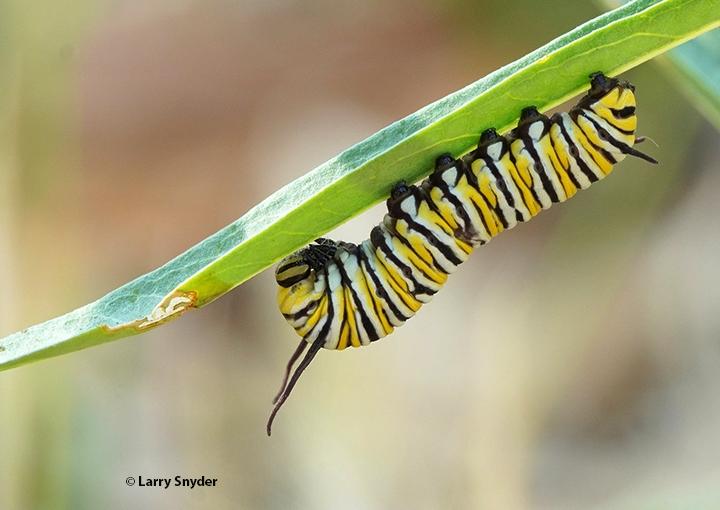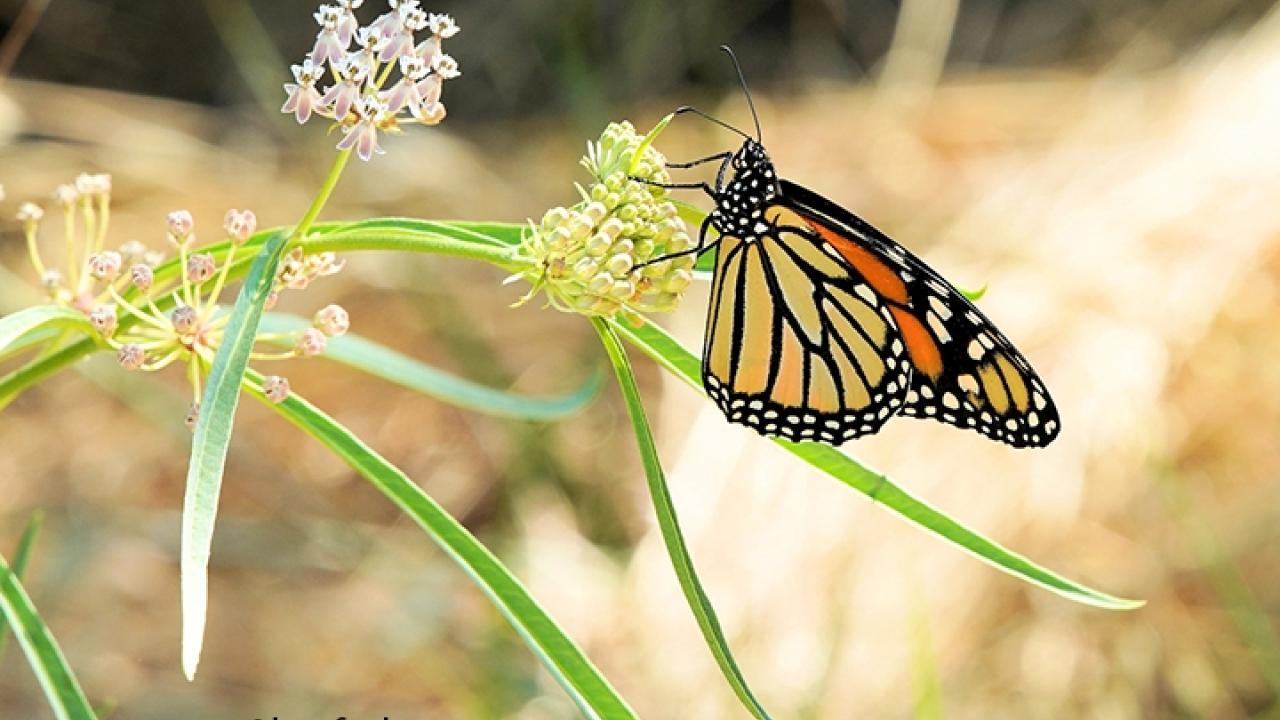A three-year study of wild monarch butterflies and milkweed in rural Davis has yielded key insights into factors that constrain monarch development.
“This study collected a high-resolution temporal dataset on milkweed-monarch interactions during the three years prior to the precipitous single-year population decline of western monarchs in 2018,” said community ecologist Louie Yang, a professor in the UC Davis Department of Entomology and Nematology.
Yang organized and led a 135-member team, all co-authors of a paper published in the journal Ecology and Evolution.
From 2015 through 2017, the team monitored the interactions of monarchs, Danaus plexippus, on narrow-leaved milkweed, Asclepias fascicularis, planted in December 2013 on city-owned property in the city of Davis.
“This study has three key findings,” Yang said. “First, we documented early and late seasonal windows of opportunity in the wild, migratory western monarch population. Second, our data suggest that early and late seasonal windows were constrained by different factors. Third, climatic and microclimatic variation had a strong effect on the timing and importance of multiple factors affecting monarch development. Broadly, we hope that this study contributes to a more temporally detailed understanding of the complex factors that contribute to year-to-year variation in monarch breeding success.”
The project, funded by two of Yang's National Science Foundation grants, involved UC Davis, Davis Senior High School and the Center for Land-based Learning, Woodland. Among the team were 107 high school students, a K-12 teacher, 18 UC Davis undergraduates, three graduate students and two postgraduate researchers.
Monarchs listed as endangered
The migratory monarch butterfly is now on the International Union for Conservation of Nature (IUCN) Red List of Threatened Species as Endangered — threatened by habitat destruction and climate change. Statistics show that the overwintering population of western monarchs along coastal California has declined by more than 99 percent since the 1980s, according to the Xerces Society for Invertebrate Conservation.
The team set out to answer three questions: How do the developmental prospects of monarchs vary in time, within and across years; How do the combined effects of bottom-up, top-down, and abiotic factors interact with seasonal variation in monarch density to constrain the timing and extent of seasonal windows of opportunity; and How do climatic variation and microhabitat heterogeneity affect these constraints?
“Seasonal windows of opportunity are intervals within a year that provide improved prospects for growth, survival, or reproduction,” Yang wrote. “However, few studies have sufficient temporal resolution to examine how multiple factors combine to constrain the seasonal timing and extent of developmental opportunities.”

Different factors in early and late season
Yang and his team planted 318 narrow-leaved milkweed adjacent to the North Davis seasonal irrigation channel, which carries runoff water from summer irrigation and winter rainfall. The researchers recorded daily and sometimes sub-hourly temperatures and precipitation, measured milkweed growth and removal by herbivores, and counted and measured eggs and larvae. Over the three years, the team documented 674 weekly observations of monarch eggs and 997 weekly observations of monarch caterpillars, with a peak in numbers in 2016.
The results showed that different combinations of factors constrained the early and late season windows of opportunity for monarch recruitment.
In the early season (end March to end June), females laid a lot of eggs on emerging plants but with low survival. As the summer progressed, there was a tradeoff between increasing quantity of host plants and decreasing quality, as plant defenses developed.
In the late season (end June to end of September), caterpillars were constrained by plant defenses and hot weather.
Variations in climate and microclimate through the seasons played a foundational role in the timing and success of monarch developmental windows, the researchers found. More exposed microclimates were associated with higher developmental success during cooler conditions, and more shaded microclimates were associated with higher developmental success during warmer conditions. This suggests that habitats with a mix of microclimates could buffer the effects of climatic variation.
The early and late monarch developmental periods were generally warmer in 2017 than in the two previous years. The number of surviving emerging plants declined over three years, from 281 in 2015 to 238 in 2016 and 226 in 2017. However, more of the surviving plants grew to larger sizes over the years. After the rainy winter of 2016-17, plants grew particularly well.
Today the milkweed population at the North Davis Channel is being maintained by the city of Davis and dedicated citizens, including Davis resident Larry Snyder, who documented the project in photographs. “We aren't monitoring there intensively, but we've seen monarch eggs, caterpillars and adults there this year,” Yang said.
More monarch projects from the Louie Yang lab are pending. “The next paper in press represents research done several years ago and is focused on the timing of herbivory and its effects on flowering,” he said. “We are studying several California milkweed species.”
Media Resources
Different factors limit early- and late-season windows of opportunity for monarch development (Ecology and Evolution)
Kathy Keatley Garvey is a writer with the UC Davis Department of Entomology and Nematology. Adapted from an original article published here.
